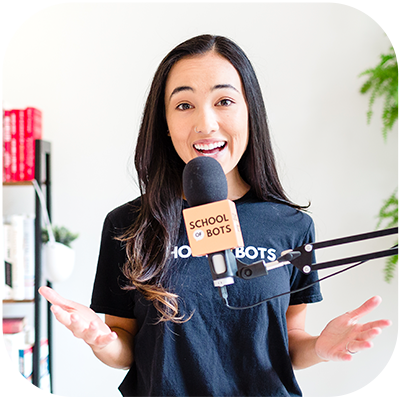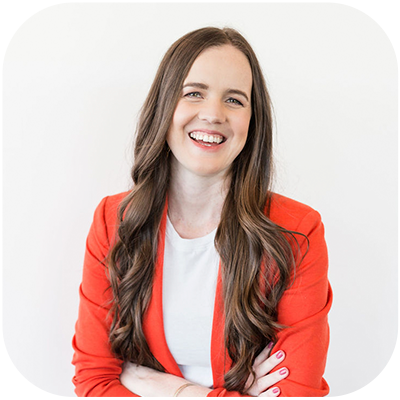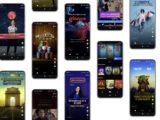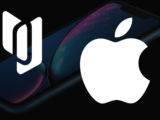
How Digital Marketing Will Change: 14 Predictions for 2021
January 2, 2021Digital marketing is no stranger to changes, especially after a year like 2020.
We have to stay on our toes if we want to stay relevant with the never ending changes to algorithms and regulations—and part of that is positioning ourselves for success.
What is digital marketing going to look like in 2021?
We had had 14 digital marketers weigh in to let us know what they see on the horizon, so we can all plan accordingly and have a great year of engagement, clicks, and conversions.
Here are predictions from 13 of digital marketing’s best minds for 2021.
Dan Dillon, Vice President of Marketing at Reveal Mobile
As the pandemic subsides, shoppers, diners, tourists and consumers of all kinds are going to go OUT. And when they go, they are going big. Marketers will need to know where their ideal customers go, how often they visit, competitors they’re shopping at — as much as they can know about the offline consumer journey. Reaching those audiences will be critical to business growth and will separate the 2021 winners from the laggards.
Steve Hooper, SiteGeek
We saw a massive shift to online in 2020 because no one had a choice, NOW in 2021 those that shifted have choices. The first is to wing it, and carry on thinking they know what they are doing, the second is to get trained or outsource what they are doing to make sure they are benefitting from the new normal. Without doing one or the other, businesses will eventually fail, which just makes me sad. 

The massive and sweeping emphasis on privacy is going to alter (and significantly inhibit) the way advertisers are able to target and track prospects. This might be the first time in the history of online advertising that we have actually gone backwards in terms of our ability to capture and utilize data. I believe this is going to place a heavy emphasis on the quality of the creative being used in online ads as well as the need to monitor and optimize the entire user journey (not just the conversion event). Advertisers are going to need to work to qualify prospects through intrinsic values (like user behavior and action) instead of relying as heavily on extrinsic values (like demographic information). The Customer Value Journey just became that much more important!
Russ Henneberry, Founder at theCLIKK.com
We will begin to see a crack in the Facebook/Google ad duopoly as Amazon continues to steal share from Google search ads and networks like Spotify, TikTok, Reddit, Pinterest, become more proficient at serving ads. These smaller networks are gaining ground in the areas of audience targeting, self-serve ad platforms, and cost-per-acquisition (CPA and CPL) objectives rather than just CPM models. 2021 is a good year to dip your toes in the waters of some of these smaller ad platforms and start testing.
Rachel Pedersen, Consultant and Strategist at The Viral Touch & Social Media United
2021 is an entirely new look at social media and marketing. After a long year of growth, hardship, and survival (for many), people are ready to experience authenticity on a new level. Here’s how to implement it: everything stems from intention.
It sounds fluffy, but it’s actually incredibly foundational.
What is your intention with that Instagram post? Sales or service? What is the intention behind your YouTube video? Vanity metrics or value? What is your intention for replying to comments? Engagement or connection?
By starting with your intention before creating a single piece of content, your fans/followers will feel the authentic care you and your brand have for them. Instead of resisting new platforms such as Clubhouse and TikTok, lean into the intention of showing up where your customers are.
Here are some starting points and ideas for intentions:
To serve our fans and followers deeply. To help our customers get out of pain/frustration by offering solutions that actually help them. To understand our fanbase more deeply and meet them in their need. To bring light to the issues that matter to our people.Apply this prediction to your marketing, and watch your fans/followers soar as your intention is felt.
Nathalie Lussier, Founder of AccessAlly
In 2020, at AccessAlly we saw a huge wave of face-to-face trainers, associations, and business owners creating online courses and membership sites because of COVID-19 lockdowns across the world.
In 2021, these newly minted online businesses will get more sophisticated, and find ways to differentiate themselves by:
Selling “bulk course licensing”, where a course creator can sell multiple seats in a program to a company and earn more for their intellectual property than they could have selling courses to individuals.Fighting Zoom fatigue with short actionable self-paced learning videos, and asynchronous communication through forums and Slack groups.Championing user privacy while marketing, by removing Facebook retargeting pixels, and switching from Google Analytics to privacy-first companies like Fathom.Creating rewards programs and giving struggling subscription members a financial break, to put people first and support the community as a whole.Although it’s hard to say when everything will “go back to normal”, as marketers we know that nothing stays the same for long.
That’s why I think 2021 will be the year that offline businesses that were forced to learn online marketing are going to see a return on their efforts.
Some may choose to re-open in person, for a premium, but those that figure out how to connect with customers all over the world will likely decide to keep growing their reach and revenue online.
Savannah Sanchez, Founder of The Social Savannah
I believe that 2021 will be the year of channel diversification for paid social spend. Historically, the majority of the ad budget for eCommerce brands has gone towards Facebook and Instagram advertising. However, with all of the changes coming next year with iOS 14, Facebook’s tracking, targeting, and reporting may not be as effective as previous years. I believe that this will have brands looking at channels like Snapchat, TikTok, and Pinterest more seriously. The ad tech, especially on Snapchat, is getting more advanced and many brands are seeing similar returns on Snapchat as they do on Facebook, so I believe there will be much more marketing spend dedicated to Snapchat next year.
Marisa Murgatroyd, Founder & CEO of Live Your Message
I have two predictions for this year!
The Declining “Internet Middle Class.”
As often happens when markets get more crowded and more sophisticated, some people win and some people lose. Because with more opportunity, comes more competition. And competition has never been fiercer on all the major online platforms — especially Google, Facebook and Instagram. Ask anyone who runs a Facebook ad agency and they’ll tell you that it’s getting harder and harder to get a significant return on ad spend (ROAS). I often tell my students that they need to be prepared to blow at least $10K on Facebook ads (if not a whole lot more) before they see any real return. The same goes for getting listed on the first page of Google or getting views, clicks and comments on social media… While it IS still possible, it’s harder and harder to “get lucky” on talent and charisma alone. You have to develop a highly specialized skill set and give each platform what its specific algorithm wants. Which means that, with some notable exceptions, the businesses and individuals with deeper pockets, deeper connections or deeper marketing chops are winning the internet… and the middle is dropping out. The big players are either getting bigger or stepping off the field as savvy new competitors leap onto the bench to take their place. So don’t despair — if you’re reading this article — you still have the opportunity to get on the bench if you’re willing to learn the skills you need to succeed online — not just through talent and charisma, but through smarts and savvy.
The Death of the Dabbler
With more opportunity and more competition, it’s not enough just to play the game. You have to play the game to win. With so much competition and the challenge in finding your audience online, you have to double down and go all in if you’re going to succeed and take a spot on the bench as a real player. Because the middle is dropping out, it’s easy to stay stuck at the starting gate, especially if you’re not 100% in. If you’re not fully aligned and on your mark, you won’t make it on the bench. So on the one hand the old guard is stepping down and new spots are opening up, and on the other hand it’s becoming harder to grab those spots unless you specialize (Trend #2) and develop real internet marketing savvy (Trend #4). The internet used to be the place where a “newbie” could become “internet famous” literally overnight. And while that’s DEFINITELY still possible… it now takes real commitment and chops to build an audience and grow your business online. There is no silver bullet. You have to put in the time, learn proven strategies to succeed (or as I like to say, be the scientist in the experiment lab of your business) and go all in.
Scott Desgrosseilliers, CEO of Wicked Reports
The Apple vs. Facebook war is going to have seismic changes to Facebook advertisers. We are headed “back to the future” where advertisers will need to use Facebook as a traffic source but completely unable to trust, verify, or count on the reporting accuracy.
Ryan Levesque, CEO of The ASK Method Company
There is a massive opportunity around incorporating Personalization in your marketing in 2021. But not just any type of Personalization. There has been a massive backlash toward what’s known as “Algorithmic Personalization.” This is when the major advertising networks – like Facebook & Google – use the massive amount of data they have around our behavior online to show us content, ads, and products that their algorithm “thinks” we might like.
This has come to a head in Q4 2020, when Apple announced that IOS 14.3 would come with standard privacy features preventing Facebook from tracking your “off platform” behavior to feed their Big Data algorithm.
Why did Apple do this? In response to user demand, naturally. To cater to the fact that we as users of the internet, don’t want the “robot overlords” telling us what to like, what to think, and what to buy. At the same time, with the vast amount of data, information, and options to sort through online, as users we STILL rely on heuristics to help us decide “which one is right for me” when it comes to making purchasing decisions online. This is where the BIG personalization opportunity comes in. While people don’t want “Algorithmic Personalization” to tell us what to do, we DO want to be actively involved (and aware) of the personalization experience online. To make choices around what CONTENT we want to see and what PRODUCTS we want to buy. This is what’s known as “Interactive Personalization”. Where the user is given a CHOICE, and AGENCY over expressing their preferences online. In other words, instead of choices being made algorithmically, without us being aware of it happening behind the scenes… The big opportunity is to INVITE your visitors to PARTICIPATE in the choice. Tactically what that means is this: Invite them to answer questions when they land on your website so you can show them the right content or the right product based on how they ANSWER those questions. In other words, to use what’s known as a “QUIZ Funnel”. We recently USED this strategy ourselves to generate over $8.59M in less than 55 days.
And there are thousands of entrepreneurs having success with this very strategy, anywhere from launching from ground zero – to generating hundreds of leads and customers every single day.
This is a strategy we’re going ALL IN on in 2021, and it’s a powerful HEDGE against the battles BIG TECH will be fighting – between companies like Apple, Facebook, Alphabet (Google), Amazon, and Microsoft. It’s a way to TAKE BACK CONTROL of your business, and deliver a powerful, personalization experience for your users so that you can ultimately better SELL and better SERVE in 2021 and beyond.
Natasha Takahashi, Co-Founder of School of Bots
In 2021, we’ll see the biggest increase in businesses using chatbot marketing to date (AKA marketing with mobile messaging apps.)
Why? Because businesses can now market on 3 of the biggest messaging apps in the world: Facebook Messenger, Instagram DM, WhatsApp.
As a marketer, you can grow lists on Messenger, WhatsApp, and Instagram DM, and automate conversations for hundreds of use cases.
In 2016, we saw Facebook enable marketers with Messenger bots. Messenger has been an incredible guinea pig for marketers to understand conversational psychology and what leads/customers want to be able to do in a conversation.
Now, we get to level up to the next phase of marketing with messaging apps: Messenger, WhatsApp, and Instagram – collectively and individually.
If you’re wondering what you can do right now… As of January 2021, Messenger bots are already available for you to utilize at full force; Instagram DM bots are in private beta (we’re currently testing use cases with Facebook); and WhatsApp bots are in private beta (we’re currently testing use cases with Facebook.)
2020 exponentially grew the number of mobile messaging app users and the amount of time they spend on the apps everyday. More businesses than ever had to open up communication channels via messaging apps that they didn’t have before, or they would’ve gone out of business.
Even if you don’t personally plan to learn this new skill of conversational marketing, you need to at least understand how it works and plays a role in a company’s marketing system.
Emily Hirsh, CEO of Hirsh Marketing
When I think about success in 2021, I believe it’s going to be more important than ever to go back to the foundations and basics of marketing as the online space gets more and more saturated. I have 8 predictions that I believe will be critical for your marketing success in 2021:
1. There will be a greater importance of knowing your customer value and your customer’s average life cycle (how long it takes from the time that they first join your list to be coming a paying customer). In 2020, my team and I have seen that the average customer lifestyle is increasing. This data is key as this should drive your strategy. If you know that it takes, on average, three months for one of your leads to go from initially joining your list to becoming a paying customer, then you can plan your marketing strategy and projections around that. It will also be vital to know your average customer value as ad costs continue to increase. You’ll need to know exactly how much you can pay for a lead and still be profitable – and if you realize you’re not going to be profitable after pulling this data, this will allow you to strategize ways to increase your customer value.
2. Videos and Instagram Reels are going to continue to take precedent and convert better than ads that use images. Over the last several months, I’ve seen that ads that are using short videos or Instagram Reel are cutting CPM’s (cost per thousand impressions) in half. I believe that this will continue to be the case as Facebook tries to compete with Tik Tok.
3. Facebook groups will start dying in 2021 (if they aren’t already dead). I’ve seen that as an admin of a Facebook group, your posts only receive a fraction of the reach and engagement as your group’s members’ posts and it’s become increasingly more difficult to get your Facebook group members to convert into customers. If you’ve already established a highly engaged community on Facebook, I think you’ll be okay, but I wouldn’t go into 2021 trying to build a new group from scratch. I think you should instead put more effort into direct methods of nurturing and connecting with people like podcasts, engagement videos, reaching out via Instagram DM’s, etc.
4. Innovating your webinar experience will be critical. The digital marketing space is heavily saturated with webinars, many of which follow the same templates, formulas, and pitching techniques that your audience has probably seen hundreds of times before. If you want to have success with your webinars in 2021 and prevent your audience from tuning you out, you MUST innovate the experience you take your customer on so that you stand out rather than get drowned out. You’ll need to consider how you can connect with your audience more, how you can get them to engage, how you can provide them valuable content they can’t find anywhere else. That may mean making it shorter, longer, turning it in to a workshop, turning it in to a pop-up podcast series, refreshing the title and the content regularly, etc.
5. Nurturing your audience will become increasingly important as the online space gets more and more crowded. There’s so much more noise in webinars, funnels, and online businesses than there was a few years ago. This doesn’t mean it will be impossible to find success, it just means you have to stand out and connect with your audience. To do that, you must prioritize consistently showing up for your audience to deliver extremely valuable content that makes an impact in their lives. You must also a solid nurturing strategy for people who don’t even know about you/your brand yet through brand awareness and visibility content, in addition to nurturing the people who DO already know about you, but haven’t bought from you yet. Why? Because there’s a huge percentage of people out there who are going to join your list, watch your video, listen to your podcast, whatever it may be, but not be a customer yet. You have to strategically nurture those people and bring them back to your offer if you want them to convert. If you don’t care about showing up for your audience and how you can positively impact them, you will not have lasting success.
6. You must refresh and innovate your ad creative in order to stand out and stop the scroll. You can’t just put up templated images and ad copy – that won’t cut it. You’ll need focus on connection, emotion, community, and trust in your ads and go even deeper if you want to stand out from your competition and attract your ideal clients and customers.
7. Online businesses will continue to boom. I think course sales and coaching services are going to go way up next year as more people are moving online. More people are catching up to where those of us who are established in the digital marketing space have been for years now because of the COVID-19 pandemic. More people are getting on Zoom, exploring remote learning, bringing their businesses online, utilizing Facebook ads, etc. I think a lot of people are going to be investing in courses that are going to help them figure out what they need to do to have success online and create a new reality for themselves. So if you’re able to serve your audience in that way in 2021, I see immense success for your business.
8. The life cycle of how long content is good for will shorten. I think at least once a quarter next year you’re going to have to seriously look at your marketing, your strategy and your messaging, and make pivots and changes where needed, based on what your data is telling you. Maybe four years ago you could get away with not updating your content for six months to a year, but not so much anymore. The people who step up with value, innovation, updated content and creative, and show up for their audience in that proactive and consistent way will be the ones who do the best next year.
Elise Darma, Founder of EliseDarma.com
2020 forced a lot of business owners online. And of all the many free tools available to grow a business online today, social media has proven to be at the top in terms of its effectiveness.
When it comes to using Instagram to grow a business (arguably the world’s #1 social app and the darling child of its parent company Facebook), here’s what I predict for 2021: photo-only feeds will continue to kill your account’s engagement.
What worked in 2016 is no longer effective for 2021. Gone are the days of perfectly posed or edited images. Instagram is no longer a place for photographers to show their snaps, but is a content hub of videos, memes, lives and reality TV-like stories.
Businesses need to get on video. Even if it’s a 15-second story just to get comfortable on camera. But the key is to start today. Because customers buy from brands they feel a connection to and video is the fastest way to create that connection.
Find and use the tools that make content creation fun and fast. Here are a few of my faves:
Canva for quote cards and memesKapwing for videos like IGTVInShot for making Reels outside of the Instagram appWith that said, if turning your account into a video hub sounds intimidating, start small: film yourself on Instagram Stories and then move onto Instagram Reels. I’ll bet you’ll see faster growth in 2021 just by using these two free tools of Instagram.
Mike Rhodes, CEO of WebSavvy
What a decade this year has been. Covid has accelerated many trends, not least consumer behaviour & with it, digital marketing. But where will that take us in ‘21 & what will you need to focus on to best serve your clients?
I believe you have three main options ahead of you as a Digital Marketer:
Data: dive deep into the data side, understand automation & where AI (& ML) can help.
Creativity: get really good at persuasive copy, crafting offers & understanding human behaviour.
Strategy: or sit above both disciplines. Be able to synthesis information from a wide variety of sources & weave them into your decision making.
For this short prediction post, I’ll focus on data and drill down into Google Ads.
Less
Under the guise of ‘privacy’ expect the ad platforms to continue to pass on less & less data to you in the future. For example, Google no longer tells you the video what your Youtube ad showed on, just the channel. And, as of Sep 2020, they dramatically reduced the Search Query data you can access.
Of course we’ve all known for a while that ITP & no third-party cookies will affect our tracking & reduce the reliance on remarketing (would you buy shares in criteo?). 2021 will likely see a rise in other tracking methods (think digital coupon codes) as well as marketers focusing on longer-term, more valuable metrics, like lifetime value (LTV).
If you’re not already focusing on how to get more/better first-party data, start soon.
Prediction
We need to use the data we do have to make better predictions (& decisions) about the near future. According to BCG only 9% of CMOs can accurately predict the result of a 10% shift in marketing investment.
We’ve certainly seen a shift in this direction at my agency, WebSavvy.com.au with clients delighted by dashboards & spreadsheets that model various scenarios and forecast changes in ROAS, ROI & LTV.
How certain are you about the return you’ll get from your next $20,000 in a particular channel?
Incremental
Don’t expect the ad platforms to try & optimise your profit any time soon. Spending more to get additional leads & sales isn’t always the best approach.
Google’s little used ‘Performance Planner’ is a case in point. They’ll show you cumulative charts (that always go up & right) for cost & conversions, but if you want to maximise profit you MUST understand the incremental cost & revenue. Sure your average CPA might only go from $50 to $52 but if that means the next lead actually costs you $250, was that a sensible investment?
Google recently improved this tool to work with Shopping campaigns as well as Search, but unfortunately don’t have plans to release Performance Planner data via their Ads API, so we built a tool to help you use it. Head to www.AgencySavvy.com/blog to find out more.
Smart
Google continues to push brands & agencies alike to use it’s range of ‘smart’ tools in Google Ads. It’s smart bidding is excellent & much stronger than it was 2 years ago, but be wary of using tools like ‘smart campaigns’ until you’ve mastered the fundamentals
(readers of this blog can get my $299 Google Ad Fundamentals course for free here).
Artificial
We all know that Google is an AI-first company & possibly the biggest user of AI, at least outside of China. So expect them to continue to force more automation & AI on us.
Not all AI is bad of course. Models like GPT-3 (at least, cherry-picked examples) showed mind-boggling creativity. It can do wonderful things (write code, poetry, even do math), but it can’t be relied on 100% & when it goes wrong, it goes really wrong. So use tools like UseBroca.com, Copy.ai & UseTopic.com as idea generators, not something to replace your team.
And if SEO is your thing, keep an eye on this, as natural language answers, like those GPT-3 is able to give, will likely change the entire world of Search sooner than we think.
Summary
2021 no doubt has many surprises in store for us.
Use your time to rebuild & prepare—whatever you thought wouldn’t happen until 2030, get ready for that now. The future is here.
The post How Digital Marketing Will Change: 14 Predictions for 2021 appeared first on DigitalMarketer.
Read more: digitalmarketer.com
A quick note about the reviews I do on this site. The product vendors may give me access to their products for free in order for me to do my review, alternatively, I may have bought the product myself. However I make no promises to vendors regarding what I write in my review. Should you click a link that takes you to a sales page for a paid product for sale this link will be an affiliate link and I will be paid a percentage of the sales price should you decide to invest in it.




